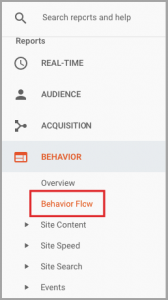by Mark Klein, Oct 22, 2014
According to one survey, in America we spend more time on our smartphones than we do eating. Most of that time is spent checking email. Websites and mail templates are busily being optimized for viewing on mobile devices. With the rise of mobile communications, we are in the midst of yet another sea change in the process of sending electronic messages.
But the change is more than just style; even the nature of electronic messaging is expanding for mobile users. Besides traditional email and its format of recipient, sender, subject, and message body, we now have text messaging and in-app communications as vehicles for electronic communications, each with its own strengths.
For companies communicating with their customers, the new challenge is determining which of these forms is best suited for their marketing communication tasks. The opportunity is big. Mobile is the industry’s first medium where marketers can dramatically improve the level of personalization with consumers (through an app/text/mobile delivered email), and can improve the timeliness of targeted offers, critical when consumers are within minutes of making a purchase (in-store, or researching on their phones on the way to the store).
A comprehensive exploration of this challenge is way beyond the scope of an Email Insider column, so I’ll cheat by touching on some of the questions that have been tantalizing me for the many months.
What do customers want?
Remember customers, the people who fund our paychecks? Overwhelmingly they prefer apps to the Mobile web, with an 89%/11% split of time spent on either medium, according to SmartInsights. Customers would rather use an app than search your website with Chrome or Safari.
This bodes well for apps like RetailMeNot or Swirl or SnipScan, and for company-specific apps. If they are useful, they will be used. Winners will be companies with the best mobile apps, not ones with the best mobile websites. Today, “best” means the most intuitive, simple, cosmetically appealing user experience in the app itself, because the app is the new mobile-rendered website.
What do customers not want?
A big issue for many consumers is intrusion. They don’t want to be bombarded with ad/marketing text messages. My informal surveys strongly suggest that people are much more sensitive to this issue regarding their mobile device than when using their desktop. Maybe they want to head off spam before it gets a foothold on their phone. Maybe text messaging seems more intrusive than traditional email. (I think it is.) Maybe they are worried about companies running up their mobile bill without permission, which can easily happen if the phone user is not on an unlimited minutes or unlimited messaging plan. Whatever the reason, mobile users seem more protective of their phone number than they have been of their email address.
Which communications channels will work best?
It could be traditional email delivered to a mobile device. There’s an app for that, and you don’t have to reveal your phone number. The SmartInsights report found that 30% of consumers use only their smartphone to check their email, and “91% were likely to check their email at least once a day on their smartphone.”
But other modalities have strengths, too. If you are willing to risk being intrusive and have good stuff to say, messaging breaks through the clutter with an “in your face, act now” approach. Content need not be limited to text. Apple’s new service supports audio and video messaging. This can be a rich experience.
Company-branded apps can shine by promoting engagement, because apps are the best vehicle to use customer pull rather than company push. Badges on the app icon encourage clicks that can bring fresh content to the mobile device, particularly customer-specific content. This leads directly to my third question.
What’s the best way to personalize mobile communications?
We all believe that relevance raises response rates. Maybe because our smartphone is always with us, and holds so much of our life — who we see, what we do, where we go — most people consider their mobile device, especially their smartphone, the most personal of their devices. So relevance (or personalization, or individualization, or whatever you call it) is crucial for mobile communications.
From over a decade of experience helping companies deliver individualized communications via print and traditional email, I think email and in-app communications are easier than mobile text messaging. That could change as the messaging software evolves. But today, because of the engagement factor, the ability to individualize and customize, and the walls many users have erected to keep out messaging, my vote is with the apps. What’s yours?
Follow comments on
MediaPost | Email Insider
(541)
Report Post







